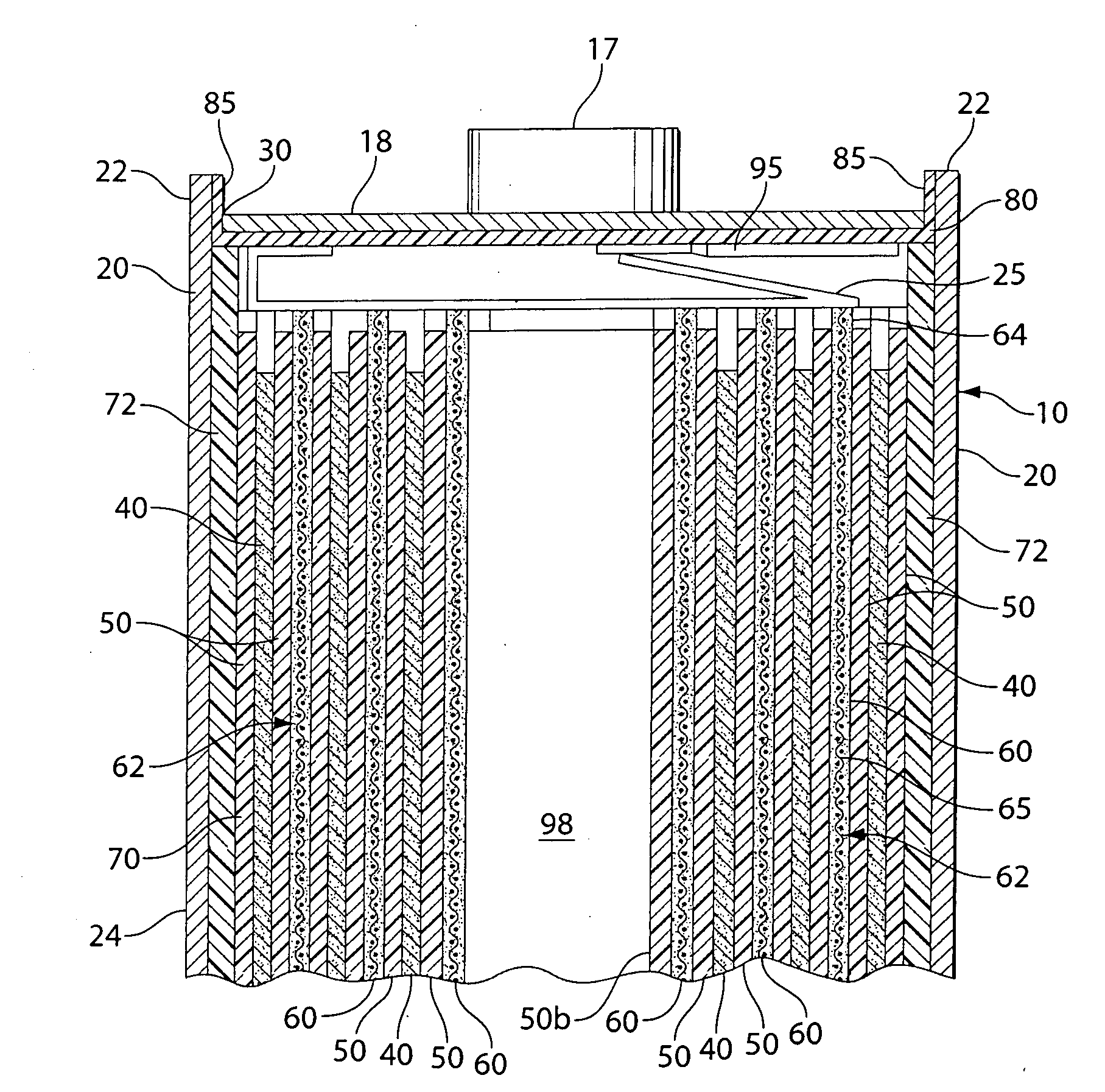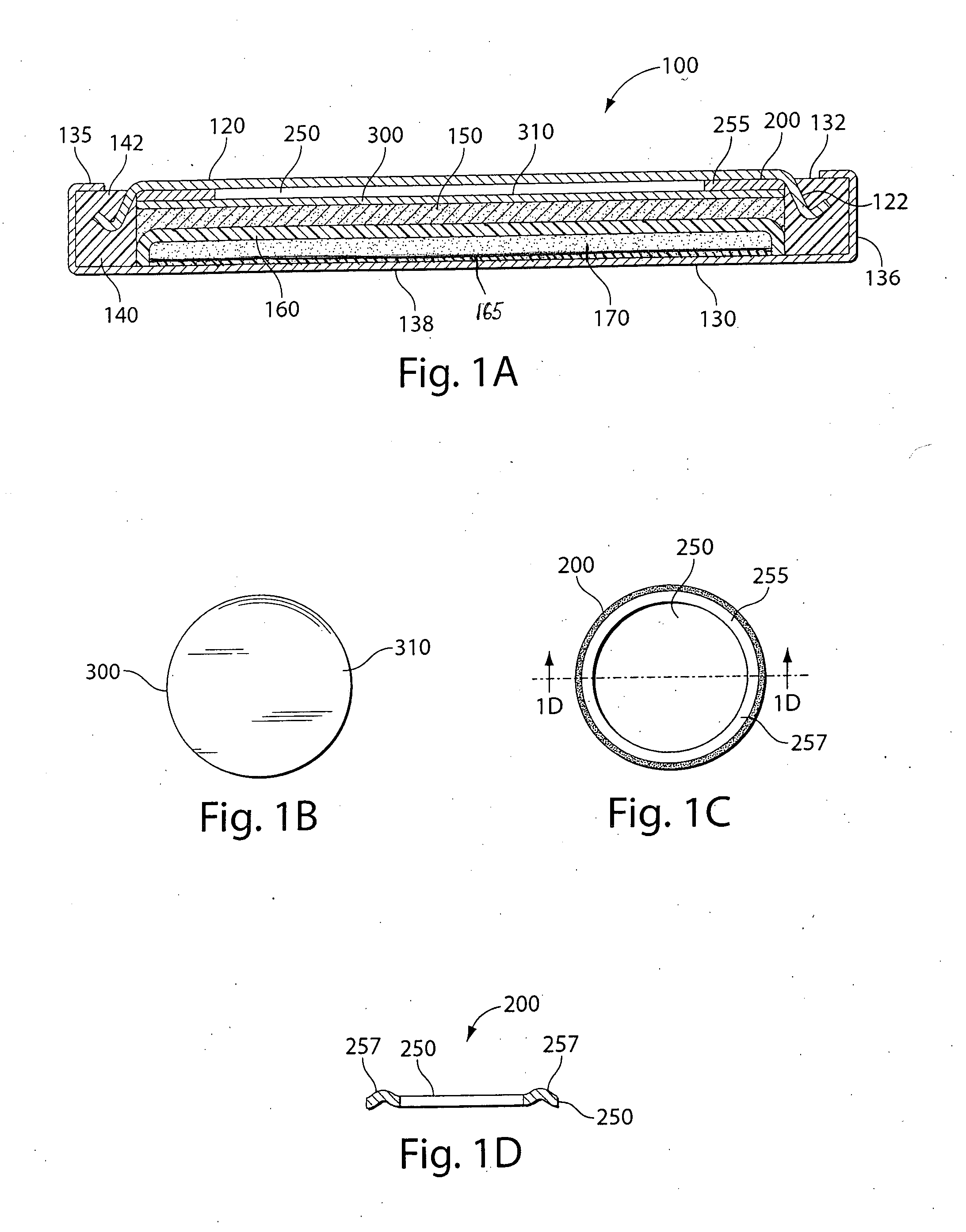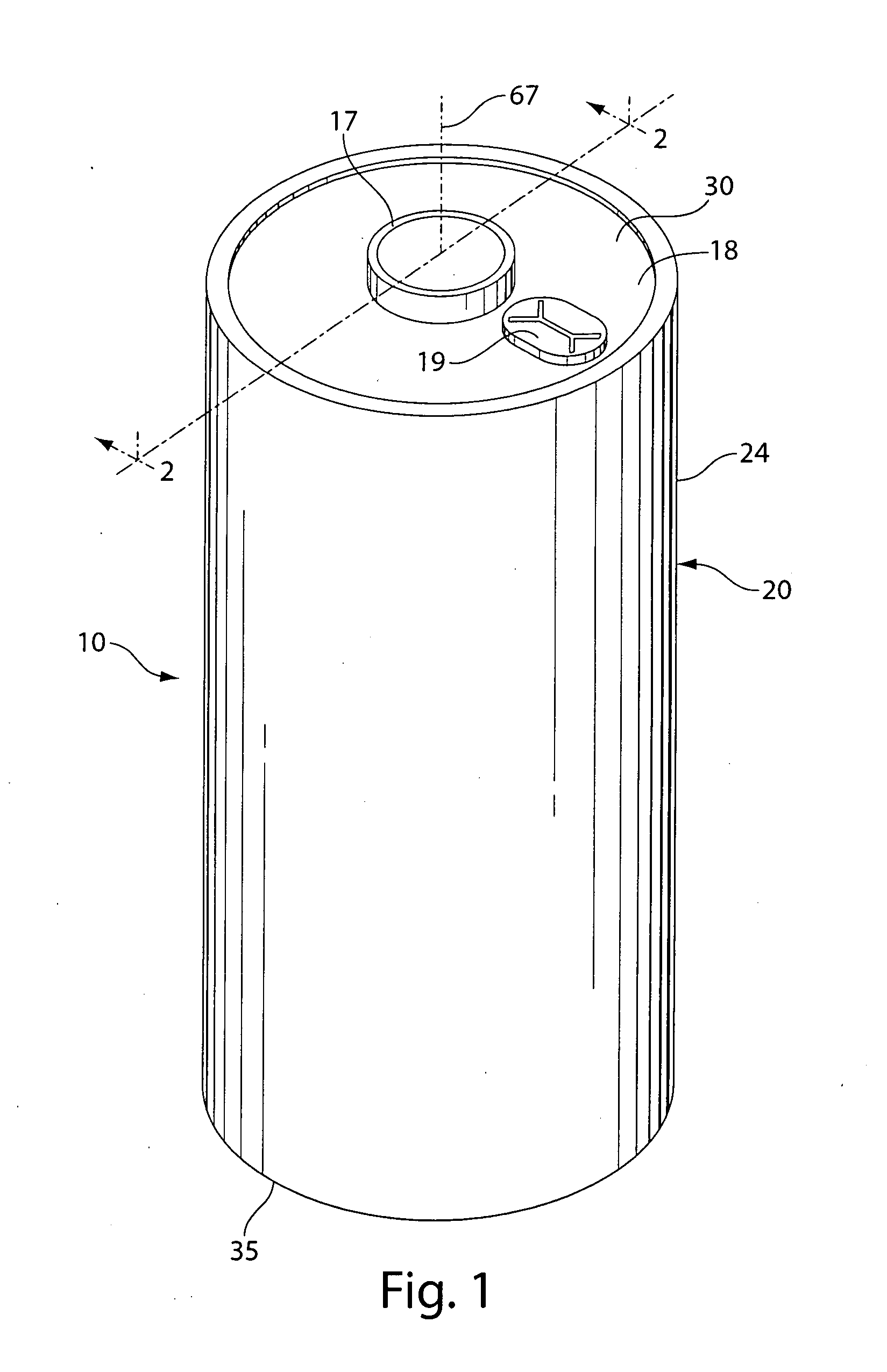[0021]The FeS is a much softer material than FeS2. For example, FeS2 has a
hardness of between about 6 and 6.5 on the Mohr scale while FeS has a
hardness of between about 3.5 and 4.5 on the Mohr scale. Because FeS is a softer material than FeS2, it is much easier to
grind the FeS to desired
small particle size using conventional ball
grinding media. It is thus easier to produce the desired average particle size and desired
particle size distribution when
grinding the softer FeS material. Also since FeS is much softer material much less heat is generated in
grinding the FeS material to the desired particle size than in grinding the FeS2 to same size. This results in a
safer grinding operation with fewer safeguards and controls required in grinding FeS material, since the FeS particles are less prone to ignite than FeS2 during the grinding operation because there is less heat produced. Thus the expense of producing a batch of mixed FeS and FeS2 of given particle size is reduced compared to producing the same weight and same particle size of FeS2. Also this results in easier preparation of the cathode
slurry as the particle size of the mixture of cathode actives may be more readily controlled. It is speculated that the softer FeS particles could also be a factor promoting improved
conductivity of the cathode which in turn results in higher efficiency of
discharge of the FeS2 in combination with FeS at high power
discharge service.
[0040]Another preferred electrolyte for the primary Li / (FeS2+FeS)
cell comprises the lithium salt lithium bistrifluoromethylsulfonyl
imide, Li(CF3SO2)2N (LiTFSI) or
lithium iodide (LiI), which is dissolved in a solvent mixture comprising 1,2-
dimethoxyethane (DME) and
sulfolane with SnI2 also added to the electrolyte. Such electrolyte
system with SnI2 additive is disclosed in commonly assigned U.S. application Ser. No. 11 / 879,097, filed Jul. 16, 2007. The electrolyte as described in this reference is applied to a lithium
cell with a cathode comprising FeS2, with no specific mention of adding FeS to the cathode mixture. However, the electrolyte systems as described in this reference with SnI2 additive therein is also be an effective electrolyte for the Li / (FeS2+FeS) cell. A preferred electrolyte may comprise 0.8 moles per
liter of the lithium salt Li(CF3SO2)2N (LITFSI) dissolved in a 80:20 volume ratio of 1,2-
dimethoxyethane DME to
sulfolane with about 3200 ppm by weight of SnI2 also added to the electrolyte. Another preferred electrolyte, for example, may comprise 1.0 moles per
liter of the
lithium iodide (LiI) salt dissolved in a 80:20 volume ratio of 1,2-
dimethoxyethane (DME) to
sulfolane with about 3300 ppm by weight of SnI2 also added to the electrolyte. The electrolyte may contain Li(CF3SO2)2N (LiTFSI) salt or
lithium iodide (LiI) dissolved in solvent mixture comprising 1,2-dimethoxyethane (DME) in amount between about 50 and 95 vol. percent and sulfolane in amount between about 5 and 50 vol. percent and SnI2 added desirably in amount between about 1000 and 5000 ppm of the total electrolyte. Typically the SnI2 comprises between about 1000 and 4000 ppm, for example, between about 2000 and 4000 ppm of the electrolyte. The presence of the SnI2 in the electrolyte prevents or at least retards the rate of continued buildup of the
passivation layer. That is, the presence of the SnI2 in the electrolyte tends to stabilize the
passivation layer either by retarding its rate of buildup or preventing continued and unabated buildup of the
passivation layer on the surface of the lithium anode. These electrolyte systems containing the SnI2 additive can all be usefully applied to the Li / (FeS2+FeS) cell. The electrolyte can improve cell performance and capacity of the primary Li / (FeS2 and FeS) cell in part because of the beneficial effect of the SnI2 additive in retarding the rate of buildup of a deleterious passivation layer on the lithium anode surface.
[0046]A low
viscosity electrolyte for the Li / (FeS2+FeS) cell is desirable in that it can reduce the lithium
ion buildup at the anode and thus reduces the level of lithium
ion concentration gradient between anode and cathode. The low
viscosity of the electrolyte improves the lithium
ion (Li+) mobility, namely, the rate of transport of lithium ions from anode to cathode. As a result of the increased lithium ion mobility the performance of the Li / (FeS2+FeS) cell can improve, especially at
high rate discharge conditions.
 Login to View More
Login to View More  Login to View More
Login to View More 


